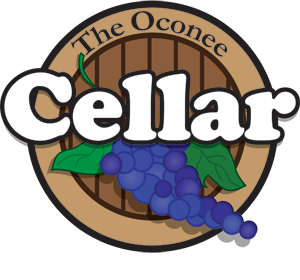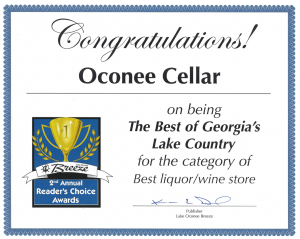Value and Quality – Spanish Wine
[imageeffect type=”shadowreflect” align=”alignleft” width=”424″ height=”283″ shadow=”shadow-medium” alt=”Vineyard in Catalonia, Spain” url=”/wp-content/uploads/2011/08/vineyard_catalonia_spain.jpg” titleoverlay=”yes”]Did you know that Spain is the most widely planted wine producing country in the world with over 2.9 million acres of planted grape vines? Only Italy and France produce more wine due to the fact that Spanish vines produce less juice because of their dry, infertile soil.
There are over 600 varietals planted with only 80 percent of the country’s wine production coming from 20 different grapes including such varietals as Tempranillo, Albarino, Garnacha, and Monastrell to name a few. Spain is also known for its sherry production in the Jerez region along with many different Cava’s (Sparkling wine) made in the Catalonia region.
Spain’s wine-making history can be traced back sometime between 4000 and 3000 BC. Under Roman rule, Spanish wine was exported and traded throughout the Roman Empire. As the colonization of the New World began, Spanish wines where then exported to South America. The major turning point occurred in the mid 19th century when the phylloxera (sap sucking insect that feeds on the roots and leaves of grapevines) epidemic ravaged European vineyards, most notably the vineyards in France.
This sudden shortage of wine made countries turn to Spain as an alternative. Many wine makers took their expertise and winemaking methods over to Rioja, Navarre, and Catalonia. Although phylloxera did eventually make its way to Spain, the remedy of grafting American rootstock to European vines had already been discovered and utilized.
Today, due to the influx of commissioned wine makers and the release of restrictions on irrigation, Spain has become a major player in the production of high quality wines.
Spanish wine laws follow the European systems of classification. Their wines are classified under a five tier system:
[list style=”orb” color=”red”]
- Vino de Mesa – This is the equivalent of most country’s table wine. This gives winemakers flexibility to blend the grapes the way they want.
- Vinos de la Tierra – This level is similar to the vin de pays system in France and normally designates the larger regions with broader geographical locations.
- Vinos de Calidad Producido en Region Determindada – These wines are considered on step closer to the DO status.
- Denominacion de Origen – This designation is for the mainstream quality-wine regions and consists of nearly two thirds of the total vineyards in Spain.
- Denominacion de Origen Calficada – Designated for regions with proven track records for high quality wines and is a step above the DO status. Regions such as Rioja, Priorat, and Ribera del Duero will belong in this classification.
[/list]
Although it is reported that Spain produces over 600 different varietals, Tempranillo is the most widely planted red grape followed by Garnacha. It is predominately grown in Rioja and Ribera del Duero, while Garnacha is the main grape grown in the Priorat region. White varietals such as Albarino and Verdejo are popular in the Rias Baixas and Ruedo regions respectively. As the Spanish wine industry continues to grow, more notable varietals such as Cabernet, Chardonnay, Syrah, Merlot and Sauvignon Blanc have emerged as major players.
Spanish wines are known for being extremely good values in today’s heavily competitive wine market. Consumers can easily find wines with high 80 to low 90 Ratings for under $15 a bottle. Wine Enthusiast Magazine published its “Top 100 Best Buy Wines for 2010” and guess what is #1? That’s right, a great Spanish wine called Borsao 2008 which is blend of 75% Garnacha and 25% Tempranillo and sells for under $10 a bottle!
So what are you waiting for, get out of your comfort zone of buying some boring Merlot or Chardonnay and try some of the great wines that Spain has to offer!
Spanish Wine Suggestions all under $20:
[list style=”orb” color=”red”]
- Burgans Albarino 2008 – One of many great food wines made in Rias Baixas, this white wine is clean and crisp with bright acidity and pairs well with shellfish.
- Tarima Monastrell 2009 – You can’t miss this one on the shelf, the label displays a beautiful picture of a passion flower. This value player comes from Jumilla and displays flavors of Licorice, chocolate and hints of dark violets.
- Las Rocas Garnacha 2007- This 90 Rated Robert Parker beauty is made in Calatayud and will blow you away at the quality. If you have never tried a 100% Garnacha before, start here and I promise you will want to give others a try!
- Marques de Riscal Reserve Rioja 2005 – Another 90 Rated Robert Parker wine that is a perfect introduction to classic Rioja, this 100% Tempranillo can be cellared for over 20 years! Try to find that in a California wine for under $20. Classic flavors of cedar and dense black cherry dominate on the palate. Give it a try with a nice Rib Eye Steak!
[/list]


